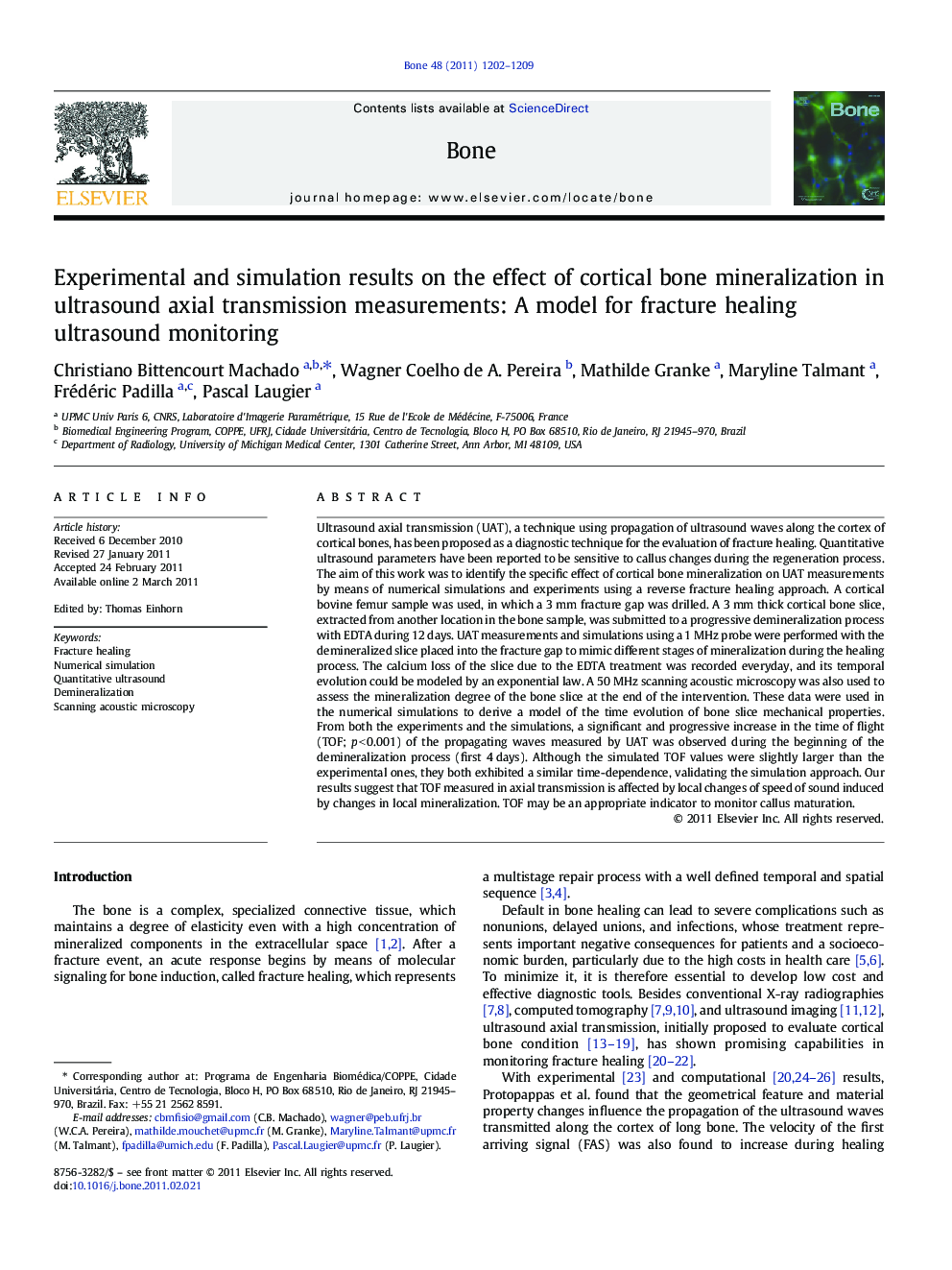| Article ID | Journal | Published Year | Pages | File Type |
|---|---|---|---|---|
| 2780200 | Bone | 2011 | 8 Pages |
Ultrasound axial transmission (UAT), a technique using propagation of ultrasound waves along the cortex of cortical bones, has been proposed as a diagnostic technique for the evaluation of fracture healing. Quantitative ultrasound parameters have been reported to be sensitive to callus changes during the regeneration process. The aim of this work was to identify the specific effect of cortical bone mineralization on UAT measurements by means of numerical simulations and experiments using a reverse fracture healing approach. A cortical bovine femur sample was used, in which a 3 mm fracture gap was drilled. A 3 mm thick cortical bone slice, extracted from another location in the bone sample, was submitted to a progressive demineralization process with EDTA during 12 days. UAT measurements and simulations using a 1 MHz probe were performed with the demineralized slice placed into the fracture gap to mimic different stages of mineralization during the healing process. The calcium loss of the slice due to the EDTA treatment was recorded everyday, and its temporal evolution could be modeled by an exponential law. A 50 MHz scanning acoustic microscopy was also used to assess the mineralization degree of the bone slice at the end of the intervention. These data were used in the numerical simulations to derive a model of the time evolution of bone slice mechanical properties. From both the experiments and the simulations, a significant and progressive increase in the time of flight (TOF; p < 0.001) of the propagating waves measured by UAT was observed during the beginning of the demineralization process (first 4 days). Although the simulated TOF values were slightly larger than the experimental ones, they both exhibited a similar time-dependence, validating the simulation approach. Our results suggest that TOF measured in axial transmission is affected by local changes of speed of sound induced by changes in local mineralization. TOF may be an appropriate indicator to monitor callus maturation.
Research highlights► Ultrasound axial transmission has been proposed for monitoring fracture healing. ► Our goal was to identify the impact of mineralization on ultrasound measurements. ► We used a step by step demineralization process as an inverse fracture healing model. ► We found that US measurements are affected by local changes in mineralization. ► Axial transmission can be an appropriate technique to monitor callus regeneration.
